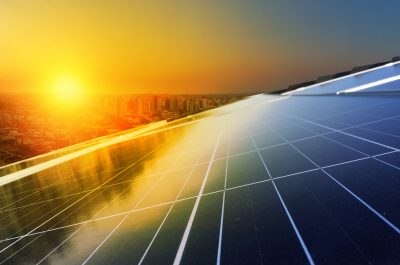Celebrating the re-marriage of energy and emissions reduction
Prime Minister Scott Morrison has re-united the energy and emissions reduction portfolios in a clear signal that the energy sector has a major role to play in the climate solution.
But why do these make so much sense together?
Energy and climate policies are closely linked and if not coordinated, the solution of one can create a problem for the other.
The re-marriage of climate and energy is an indication that the agenda of the Morrison Government, through Minister for Energy and Emissions Reduction Angus Taylor, has shifted. It signals recognition of the need to align energy and climate policy so that they deliver emissions reduction while providing affordable and reliable power.
For government, merging these two portfolios ensures that the left hand of climate policy knows what the right hand of energy policy is doing and allows them both to work together, as efficiently as possible.
Historically, some climate policies have resulted in unintended consequences for the energy industry – for example subsidies that favour one type of fuel or technology over another distort the market adding to bill pain for customers, who ultimately pay for them.
These subsidies have however been successful in achieving their objective of supporting the growth of renewable energy, especially household solar. Now, there is growing urgency to plan and manage the rapidly accelerating uptake.
The popularity of rooftop solar now means that our grid is approaching levels of ‘solar saturation’, where the amount of power exported into some parts of the grid is too much for it to handle.
This is not to say that solar panels are bad.
Solar technology, including distributed energy resources (DER) such as household PV and batteries, will be crucial in our future energy mix. Properly harnessed, they can actually help the electricity system.
What we need is a plan to manage their integration.
This is where linking climate policy and energy policy makes a lot of sense.
If we pursue too rapid expansion of emerging technologies without planning for their integration we will reduce their effectiveness.
The rise of DER and their management is the focus of the Open Energy Networks project between Energy Networks Australia and the Australian Energy Market Operator (AEMO).
The project aims to maximise the benefits of integrating new technologies, such as household solar and electric vehicles, for consumers.
Open Energy Networks proposes options for improving the electricity system to ensure electric vehicles and household solar and storage work in harmony and deliver the most value for all customers.
In addition to small scale renewables, we of course have larger scale solar, wind and hydro generation.
Because these are rarely built where existing generation is we need to start thinking about how we move this energy from where it’s produced to where it’s needed.
Queue transmission.
Again this shows where energy and climate policies are critically linked.
Throughout the world, the logical response to increasing amounts of renewable generation is greater connectivity. This ensures power can be shared from places where the wind is blowing and/or sun is shining to where it is not. It also creates competition, putting downward pressure on energy prices.
Planning is underway in Australia to road-map new transmission and interconnection through the AEMO’s Integrated System Plan.
There will also be wider discussion through government drawing on the new Cabinet position of Minister for Population, Cities and Urban Development to help shape the growth and connection of our expanding population centres.
Along with this, working with the various state agencies will be important to ensure state planning departments cater for the changing energy environment and how populations are connected.
Electricity is just one part of energy and climate policies. Another crucial component is gas.
Policy framing the evolution of our gas network, such as the National Hydrogen Strategy, is another key example of the interlinking of climate and energy policy.
Our gas networks are already working on decarbonisation, with trials underway across the country.
Recent advice released by Energy Networks Australia confirms that injection of hydrogen into the gas distribution network can be done under current gas legislation.
Hydrogen can play an important role in not only helping Australia’s gas networks decarbonise but also as energy storage.
Flexible hydrogen production can help soak up excess renewable electricity on sunny and windy days, then fuel cells can generate emissions-free power on still evenings.
As demonstrated in Energy Networks Australia’s Gas Vision 2050 report, hydrogen’s scope is impressive, with potential to widen customers’ power options, improve and increase renewable generation, provide options for mobility and even create a new energy export market.
Marrying energy and climate policy was a good decision by the Prime Minister and reflective of how the sector is already working to support our transforming energy system.
The opportunities this presents to give stability and certainty around the two major policy areas will be critical as we continue to navigate the energy evolution.

